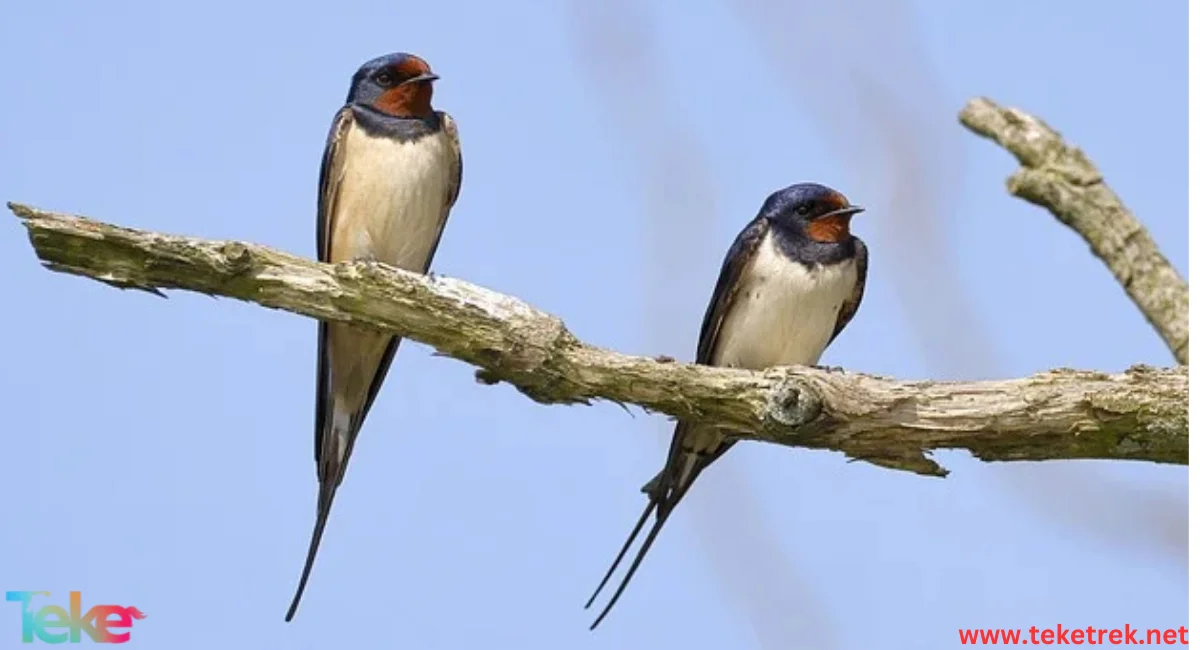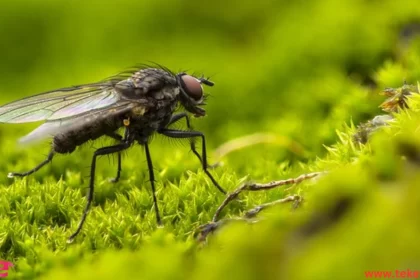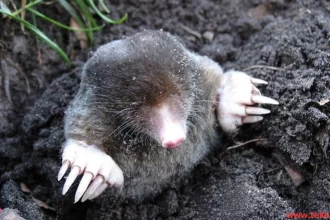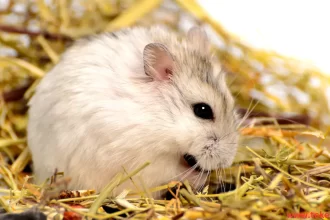Despite being small birds, swallows are associated with various spiritual aspects of life. They symbolize liberation from past pains and anxieties, signifying the renewal of hope, happiness, and emotion. Shakespeare refers to these birds in his saying, “True hope is swift and flies with the wings of the swallow.”
There is a lot of fascinating information about swallow birds; let’s explore it through this article on TekeTrek Website discussing swallow birds, their habitats, and some interesting facts about them.
Interesting Facts About swallows
The swallow bird is also widely referred to as the “bird of freedom.” They are found in every temperate climate region of the world. While urbanization worldwide has caused the migration of other birds, swallows have adapted to the changing world and environment.
These lively and courageous little birds are present to stand by humans.
- There are 84 known species of swallows worldwide.
- swallows are believed to have evolved in Africa, which is where most swallow species are found.
- The swallow is one of the fastest birds, with a recorded top flying speed of 74 kilometers per hour.
- The Bank swallow is the smallest among all swallow species.
- The Purple Martin (scientific name: Progne subis) is not only the largest swallow in North America but also among the largest in the world.
- Genetic mutation can result in the birth of white swallows. These white swallows generally have poor eyesight and rarely survive past maturity.
- swallows prefer nesting in open-faced structures such as barns, sheds, and cowsheds.
- It takes a pair of swallows up to 1200 flights to build a nest.
- swallows prefer to nest near large domestic animals like horses or cattle.
- swallows may have become rarer until humans began practicing agriculture and animal husbandry.
What does the swallow symbolize?
The swallow symbolizes liberation, hope, happiness, and affection, and is considered a symbol of spiritual life and freedom.
The swallow in Islam
In Islam, the swallow symbolizes freedom, purity, and protection. It is believed to be a blessed bird, and its presence is often associated with positive omens and blessings.
Size and Shape of swallow bird
- At rest, the swallow appears bird-sized, with a slightly flattened conical shape and a barely noticeable neck.
- They have broad shoulders that taper into long, pointed wings.
- The tail extends beyond the wingtips and features a deep fork provided by large outer feathers. Both sexes measure between 4 to 8 inches in length and weigh between 11 to 20 grams.
- swallows are primarily characterized by metallic or steel-blue upperparts and reddish-brown to dark underparts.
- The blue face and crown contrast with the cinnamon forehead and throat. The white spots under the tail may only be visible during flight.


Habitat of swallows
- swallows are highly adaptable birds that can be found in a variety of open habitats. From agricultural fields, meadows, and parks to beaches, roadside edges, ponds, lakes, marshes, grasslands, and coastal waters.
- It is often very easy to find swallow nests inside barns, bridges, eaves, and other structures.
- swallows are distributed from sea level up to 10,000 feet.
- Breeding habitats should include open areas for foraging, as well as cliffs or structures for nest building. A source of mud, such as a riverbank, is necessary to provide materials for nest construction.
Swallow life
- swallows tear insects from above the ground or water to heights of 100 feet or more. swallows often fly with smooth wing beats in straight flight paths, rarely gliding. They can execute turns and rapid dives. When aquatic insects hatch, swallows may join other swallow species in mixed foraging flocks.
- swallows are generally social birds and emit short chirps to interact with each other. During times of tension or danger, the bird emits a series of tweets. Both male and female swallows nest in large flocks and participate in caring for the young.
Swallow Diet
- As swallows are insectivorous birds, they primarily feed on various types of flies and insects. Additionally, ants, bees, beetles, butterflies, cockroaches, dragonflies, grasshoppers, moths, and other flying insects also constitute the diet of swallows.
- swallows generally feed on relatively large individual insects rather than feeding on swarms of smaller prey. They also ingest small stones or eggshells and shellfish shells left by humans, which may aid in the digestion of insects or supplement the required calcium in their diet. swallows swallow their prey while in flight. In fact, this type of bird also drinks water while flying
Nesting Habits of swallows
Alongside trees, swallows build their nests in human-made structures such as abandoned buildings, under bridges, and in cliffs. Both male and female swallows participate in nest-building. The nests are constructed in burrows using mud mixed with grass. Once the nest is ready, the swallow lines it with feathers, grass, and lightweight plastic from the inside.
Types of swallows
Barn swallow
Traditionally, barn swallows with their orange and blue coloration nested inside shallow caves or on protected rock ledges. These birds sought sheltered spots from rain, as their nests were predominantly made of mud pellets, which were glued in place and left to dry. When European settlers began constructing barns, barn swallows quickly learned to utilize these structures for their benefit. They earned this name because they live in barns built by humans.
Cliff swallow
Cliff swallows primarily nested on sheltered portions of cliffs, with many mud-cup nests clustered together. While some colonies still exist in natural locations, most cliff swallows now nest on the exterior surfaces of buildings or beneath bridges.
Cave swallow
Around 45 years ago, cave swallows were extremely rare in the United States, nesting in a few caves in Texas and Carlsbad Caverns National Park in New Mexico. By around 1980, these birds began nesting under bridges and in culverts and other structures. They are now common summer birds throughout much of Texas, extending into Louisiana, Oklahoma, and New Mexico.
Tree swallow
Characterized by steel-blue upperparts and snowy white underparts, tree swallows are so named for their habit of nesting in tree cavities. Today, it’s increasingly difficult to find such natural cavities in many areas due to the removal of dead trees and branches from yards and public parks.
Violet-green swallow
Violet-green swallows, displaying a brighter mix of purple and green colors on their backs and a whiter face, often choose to nest in cavities excavated by woodpeckers. They also utilize birdhouse nest boxes designed for bluebirds.


Swallows Role in Ecological Balance?
Swallows play an important role in ecological balance by aiding biodiversity in the following ways:
- Pest Control: Swallows consume harmful insects, such as flies, mosquitoes, and butterflies, helping to reduce their numbers and minimize the damage they cause to crops and plants.
- Reducing Pesticide Use: By consuming harmful insects, swallows can decrease the need for pesticide use, helping to reduce environmental pollution.
- Supporting the Food Chain: They are a food source for other animals, such as raptors and mammals, contributing to the support of the food cycle in the environment.
How Does Their Movement Predict Seasonal Changes?
Swallows are migratory birds, and their behavior and movement can predict seasonal and weather changes in various ways:
- Seasonal Migration: It migrate to warmer areas during the winter as temperatures drop and food becomes scarce in northern areas.
- Behavioral Changes Predict Climate Shifts: Large gatherings of swallows before migration can be an indication of seasonal changes.
- Increased Activity: Swallows become more active in spring as they begin to search for food and mate.
The Difference Between Swallows and Swifts
Although swallows resemble swifts and other birds, they belong to different families and can be distinguished by their behavior. Here are some details:
- Physical Differences: Swallows are usually brown or gray with a white or light-colored belly, while swifts are typically dark brown or black with a white or light-colored belly.
- Behavioral Differences: Swallows build their nests in open areas, such as farmland and gardens, while swifts build their nests in elevated places, like mountains and cliffs. Swallows migrate to warm regions in winter, while swifts also migrate, but to different areas.
- Dietary Similarities: Both swallows and swifts eat insects and worms, although they may have different food preferences.
Swallows in Popular Culture: From Tattoos to Songs
Swallows appear in traditions, folklore, and songs in various cultures and are often symbols of freedom, beauty, and adventure. Here are some examples:
- In some cultures, it represent freedom and exploration, as it migrate long distances and return to their nests.
- In other cultures, they are symbols of love, as they return to their nests after a long migration.
- Swallows also feature in folklore, such as migration stories, and are depicted in myths relating to gods or spirits, explaining natural phenomena.
- Swallows are used in songs, including children’s nursery rhymes and folk songs.
How Do Modern Buildings Affect Swallows?
Modern buildings can impact swallows in various ways, with both positive and negative effects on their nests and behavior:
- Positive Effects: Modern buildings can provide safe nesting sites for swallows, especially if they have external structures such as balconies or columns. They may also serve as food sources if there are gardens or plants nearby.
- Negative Effects: Modern buildings can lead to the loss of natural habitats for swallows, especially if built on agricultural land or open areas. Noise and pollution from buildings can affect swallows, especially near nesting sites. Swallows may also collide with glass in modern buildings, potentially causing injury or death.
Swallows in Educational Curricula
Swallows, as symbols of freedom, dignity, and love for the homeland, are often taught to children in educational curricula. They appear in subjects like Arabic language books, where children are given information about them, their role in the environment, and specific songs related to them. They are also featured in science curricula to highlight their importance in maintaining ecological balance and their role in the food chain.
Strange Swallow Behaviors
Swallows exhibit many strange and fascinating behaviors, such as aerial dances to attract mates, presenting gifts like insects and herbs, and building intricate nests from clay and grass, which they decorate with items like leaves and feathers. They are also known for their collective migration and use of navigational systems like stars, winds, and the sun.
Swallows and Climate Change: Are Their Migration Patterns Affected?
Swallow migration patterns are affected by climate change. Changes in temperature and weather can alter food availability and nesting sites, influencing migration. Weather fluctuations, such as increased atmospheric instability, can make migration more difficult. Climate change also impacts swallows’ health and increases their vulnerability to diseases. These changes can affect the swallows’ breeding patterns as well.
Climate change leads to shifts in migration timing and routes, and swallows are able to adapt to temperature and weather changes, including changes in their food-searching behavior.
Tips for Creating a Swallow-Friendly Environment
Yes, you can attract swallows to your garden by providing a suitable environment with shelter and food. Here are some tips:
- Swallows feed on insects, so plant flowers and shrubs that attract insects.
- They need water for drinking and bathing, so provide a water source like a pond or birdbath.
- Install swallow nests in your garden and offer nesting materials like clay and grass.
- Swallows need safe places to nest, so provide safe areas like dense shrubs or trees.
Strange Beliefs About Swallows: From Good Omens to Spiritual Warnings
Swallows appear in many cultures and myths, often symbolizing good omens or spiritual warnings. Here are some strange beliefs about swallows:
- In some cultures, swallows are considered symbols of good luck and prosperity.
- Swallows are often seen as signs of spring and renewal.
- In some cultures, swallows are seen as symbols of the spirit or the afterlife.
- In certain cases, swallows are associated with death or loss.
- Swallows are also believed to predict weather changes, like rain or wind.
- Swallows are linked with gods or spirits, used as symbols of protection or blessings.
Swallows in Wars and Myths: A Symbol of Safe Return
Swallows appear in many myths and wartime stories as symbols of safe return. In Greek mythology, swallows symbolize the safe return of Odysseus after the Trojan War. In Norse mythology, they represent protection and safe return. In some cultures, swallows are associated with gods or spirits that protect soldiers and ensure their safe return.
Questions and answers about Swallows
- What are the characteristics of the swallow?
The swallow is primarily characterized by its long-pointed wings, forked tail with a metallic or steel-blue color, and reddish-brown underparts. At rest, the swallow appears to be the size of a sparrow, with a slightly flattened cone-shaped body and an inconspicuous neck. It has broad shoulders tapering into long, pointed wings.
- Where does the swallow live?
Swallows are found in open habitats such as fields, farmlands, parks, beaches, roadsides, ponds, lakes, marshes, meadows, and coastal waters.
- What does the word “swallow” mean?
The word “swallow” is an Arabic name commonly used for the swallow bird. In dictionaries, it is described as a bird of the Hirundinidae family, from the order Passeriformes, with short legs, a broad base, keen eyesight, and a forked tail that branches into two long tails, known for its swift flight.
- What is found in a swallow’s nest?
The nest is made of various materials such as small branches, grass, feathers, and mud. It contains eggs and chicks.
- What was the point of swallow?
The swallow was a symbol of freedom, hope, happiness, and affection in various cultures. It represented spiritual life and freedom, often associated with positive omens and blessings.
- Which bird is swallow?
The swallow is a small bird known for its graceful flight and distinct forked tail. It belongs to the Hirundinidae family and is characterized by its aerial acrobatics and swift movements.
- What are 3 facts about swallows?
- There are 84 known species of swallows worldwide.
- swallows are believed to have evolved in Africa, which is where most swallow species are found.
- The swallow is one of the fastest birds, with a recorded top flying speed of 74 kilometers per hour.







I don’t think the title of your article matches the content lol. Just kidding, mainly because I had some doubts after reading the article.
Your article helped me a lot, is there any more related content? Thanks!
Hello, all is going well here and ofcourse every one is sharing data, that’s genuinely fine, keep up writing.
my website :: http://boyarka-inform.com/
Thanks for sharing. I read many of your blog posts, cool, your blog is very good.